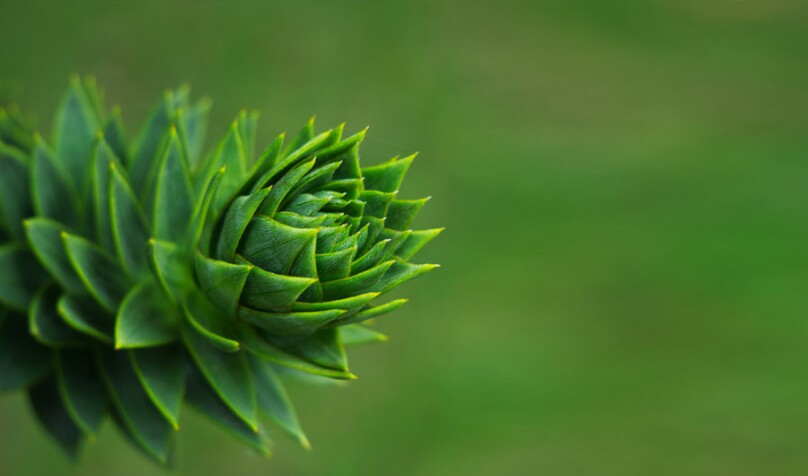Leaf-Inspired Material Makes Different Fluids Flow in Opposite Directions

Leaf-Inspired Material Makes Different Fluids Flow in Opposite Directions lead image
(Inside Science) -- Liquids usually flow in the same direction, moving along the same path of least resistance. But a new study
The researchers were intrigued by the ratcheted and spiralized leaves of the araucaria plant, commonly known as the monkey puzzle tree, so they decided to investigate its properties out of nothing more than curiosity. “We brought a sample of the leaves into the lab from the park and noticed that ethanol and water flowed in different directions,” said Zuankai Wang, a mechanical engineer at City University of Hong Kong and one of the paper’s authors. “We examined its structure because the leaves have a unique kind of curvature and we thought that must have something to do with it.”
Wang and his colleagues used a 3D printer to reproduce a three-dimensional material that resembles the branch and leaf geometries of the real plant. They called this synthetic structure “araucaria leaf-inspired surface” and they performed a number of experiments on it, observing how the design makes different liquids move.
When an ethanol or water was poured onto the surface of the novel material, the two substances always flowed in opposite directions along the synthetic branch structure, just as they did on the real plant. It became clear that a liquid’s surface tension was an important factor in determining whether it could circumnavigate the spike structures or not, therefore defining its direction of travel.
“Water has a relatively high surface tension whereas ethanol has a low surface tension and that’s where this new material’s trick comes into play,” said Antonio Tricoli, a materials scientist at the University of Sydney who was not involved in the research. “Ethanol’s lower surface tension means it spreads more easily and isn’t caught by the spikes, but water gets caught on the spikes and so has to move in the other direction.”
This new synthetic material doesn’t require external energy sources or gravity to move the liquids. Instead, it relies on capillary action, which is the spontaneous flow of liquid through narrow spaces, powered by intermolecular forces. This makes the new material a potentially efficient way to separate different liquids -- so long as their surface tensions vary sufficiently.
“What the authors are reporting is completely new and hasn’t really been discussed in the literature until now, so it offers lots of opportunities,” said Tricoli.
Cleaning up marine oil spills is one potential application for the technology; indeed, Wang and his colleagues have already successfully cleaved oil from water with their new material.
Experts currently use energy-intensive techniques
“We showed that oil and water separate nicely and completely by our design without even the need of gravity or any energy,” said Wang. “It would need finessing before being deployed in the real world, but we think this is one potential function.”
Another application could be to alleviate global water shortages, said Tricoli, for example by harvesting fog out of the atmosphere. “The water would just follow the treads to flow away and be collected.”
Editor’s Note: This story was updated on Sept. 17 to clarify that Antonio Tricoli’s primary affiliation is with the University of Sydney.


